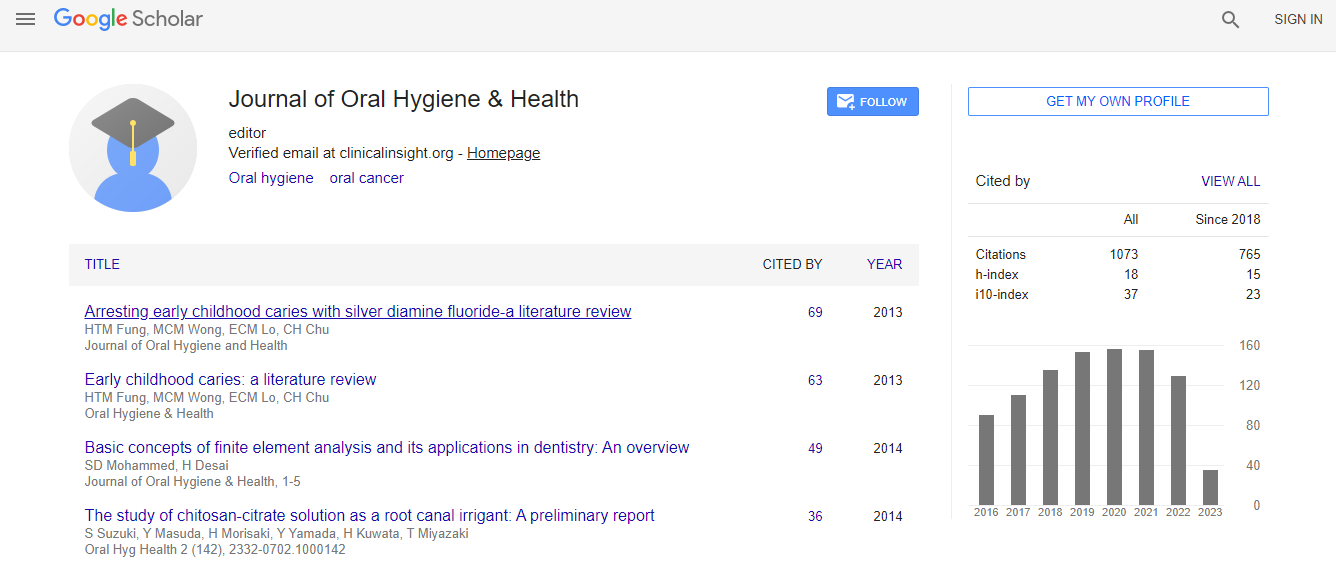Short Communication
Detection of Decrease in Stereognostic Ability of the Tongue in the Middle-Agers
Shigenori K1*, Masuda W2 and Yoshino K31Department of Health Improvement, Kyushu Dental University, Kitakyushu, Japan
2Department of Nutrition, Kyushu Women’s University, Kitakyushu, Japan
3School of Oral Health Sciences, Kyushu Dental University, Kitakyushu, Japan
- *Corresponding Author:
- Shigenori Kawagishi
Department of Health Improvement
Kyushu Dental University, 2-6-1 Manazuru
Kokurakita-ku, Kitakyushu 803-8580, Japan
Tel: +81-93-921-4302
Fax: +81-93-921-4302
E-mail: s-kawagishi@jcom.home.ne.jp
Received Date: October 13, 2016; Accepted Date: November 16, 2016; Published Date: November 23, 2016
Citation: Shigenori K, Masuda W, Yoshino K (2016) Detection of Decrease in Stereognostic Ability of the Tongue in the Middle-Agers. J Oral Hyg Health 4: 210. doi:10.4172/2332-0702.1000210
Copyright: © 2016 Shigenori K, et al. This is an open-access article distributed under the terms of the Creative Commons Attribution License, which permits unrestricted use, distribution, and reproduction in any medium, provided the original author and source are credited.
Abstract
We previously reported that senior aged people display reduced stereognostic efficiency of the tongue compared to the young adults, and suggested the feasibility of getting over this situation applying the training protocol mentioned by us. The same important issue to the development of therapy for decreased function is study on prevention of aging-dependent functional decline. Early prevention of the oral stereognostic ability decrement might be the better option while investigation of the issues should be considered during the early onset of the conditions in aged patients.
This study was conducted to understand the efficiency of tongue’s stereognostic characteristics for middle-aged people with a comparative understanding with young adults. This analysis related to tongue was conducted in 78 young adults (mean age: 24.5 years) and 33 middle-agers (mean age: 50.5 years). The method applied in this study contained 20 varied shaped test pieces in the oral cavity of the subjects. The observations revealed that most of the young adults were able to identify different shaped test pieces compare to the older participants (mean correct number of responses: 16.8 and 15.2, respectively; p<0.001). Depending on the shapes the test pieces were divided into six groups. It was found that misidentification of a piece by the young participants lead to selection of similar piece belonging to the same group. Selection of pieces from other group was almost nil. On the other hand, the older participants (middle-agers) also identified test pieces less often from separate groups. Differences in degree of decrease in the stereognostic ability between middle-agers and seniors whose ability was reported previously were also discussed.

 Spanish
Spanish  Chinese
Chinese  Russian
Russian  German
German  French
French  Japanese
Japanese  Portuguese
Portuguese  Hindi
Hindi 
